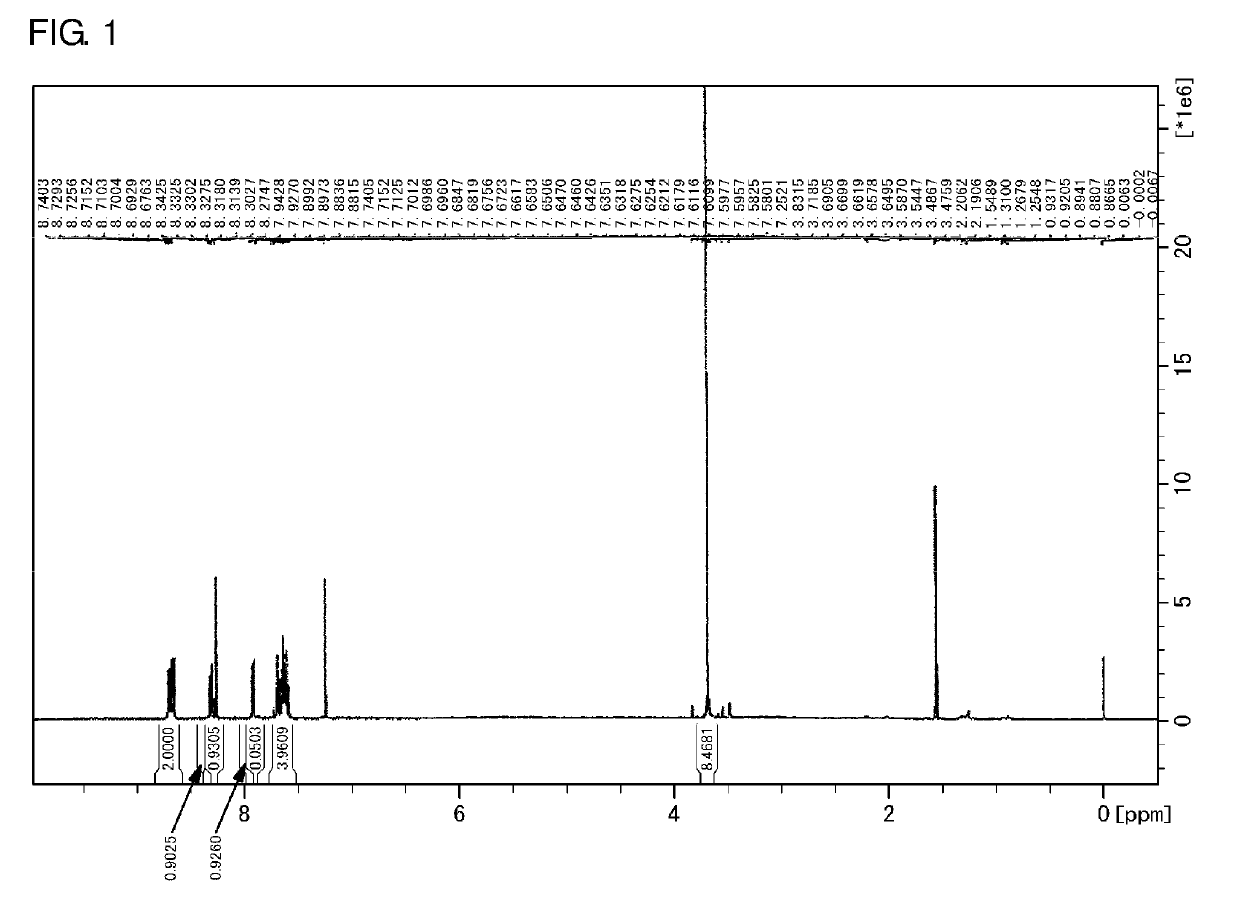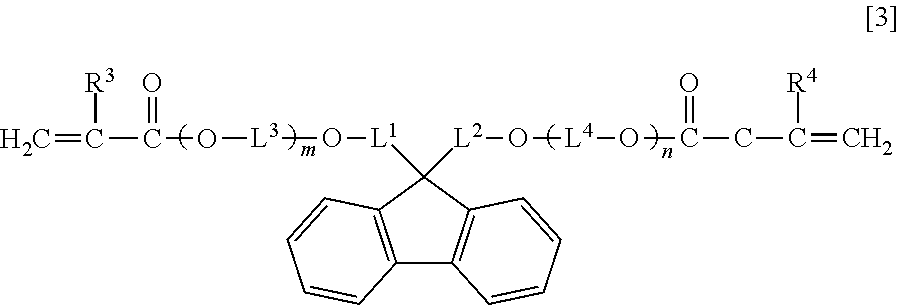Polymerizable composition comprising reactive silsesquioxane compound and aromatic vinyl compound
a technology of silsesquioxane and aromatic vinyl, which is applied in the direction of instruments, other domestic articles, optical elements, etc., can solve the problems of low heat resistance, difficult to satisfactorily adapt to the reflow process, and failure to ensure heat resistance to withstand the reflow process, etc., to achieve excellent release properties, efficient production, and adequate handling
- Summary
- Abstract
- Description
- Claims
- Application Information
AI Technical Summary
Benefits of technology
Problems solved by technology
Method used
Image
Examples
example 1
Production of Reactive Silsesquioxane Compound 1 (SN55) Solution
[0218]A 200-mL reaction flask equipped with a condenser was charged with 2.71 g (6.4 mmol) of a 35% by mass aqueous solution of tetraethylammonium hydroxide [Aldrich Co. LLC.], 8.87 g (482 mmol) of ion-exchanged water, and 91 g of THF, and the air in the flask was replaced with nitrogen using a nitrogen balloon. To this mixture, a mixture of 36.1 g (161 mmol) of STMS and 40.0 g (161 mmol) of NTMS was added dropwise at room temperature (approximately 23° C.) over 10 minutes, and the mixture was stirred for 16 hours at 40° C. Next, 7.6 g of a cation-exchange resin [Amberlyst (registered trademark) 15JWET from Dow Chemical Company] was added to this reaction mixture. The mixture was stirred for 1 hour, and then the reaction was stopped. The resulting mixture was cooled to room temperature (approximately 23° C.). Subsequently, the cation-exchange resin was filtered through a membrane filter with a pore size of 0.2 μm, and w...
example 2
Production of Reactive Silsesquioxane Compound 2 (SP55) Solution
[0220]A 300-mL reaction flask equipped with a condenser was charged with 2.97 g (7.1 mmol) of a 35% by mass aqueous solution of tetraethylammonium hydroxide [Aldrich Co. LLC.], 9.54 g (530 mmol) of ion-exchanged water, and 90 g of THF, and the air in the flask was replaced with nitrogen using a nitrogen balloon. To this mixture, a mixture of 39.6 g (177 mmol) of STMS and 35.0 g (177 mmol) of PTMS was added dropwise, with stirring at 40° C., over 30 minutes, and the mixture was stirred for 3.5 hours. The resulting mixture was cooled to room temperature (approximately 23° C.). Next, 7.5 g of a cation-exchange resin [Amberlyst (registered trademark) 15JWET from Dow Chemical Company] previously washed with THF and 1.5 g of a filter aid [KC FLOCK W-100GK from Nippon Paper Industries Co., Ltd.] were added to the reaction mixture. The mixture was stirred for 2 hours, and then the reaction was stopped. Subsequently, the cation-...
example 3
Production of Reactive Silsesquioxane Compound 1 (SN55) / DVB Solution
[0222]To the SN55 solution obtained in Example 1, 17.1 g of DVB was added, and mixed homogeneously. Subsequently, the THF, ethyl acetate, remaining water, and other volatile matter were distilled off under reduced pressure using a rotary evaporator to obtain an SN55 / DVB solution.
[0223]The obtained solution had an SN55 content of 85% by mass and a DVB content of 15% by mass as determined by GC quantitative analysis.
PUM
| Property | Measurement | Unit |
|---|---|---|
| refractive index | aaaaa | aaaaa |
| temperature | aaaaa | aaaaa |
| heat resistance | aaaaa | aaaaa |
Abstract
Description
Claims
Application Information
 Login to view more
Login to view more - R&D Engineer
- R&D Manager
- IP Professional
- Industry Leading Data Capabilities
- Powerful AI technology
- Patent DNA Extraction
Browse by: Latest US Patents, China's latest patents, Technical Efficacy Thesaurus, Application Domain, Technology Topic.
© 2024 PatSnap. All rights reserved.Legal|Privacy policy|Modern Slavery Act Transparency Statement|Sitemap



